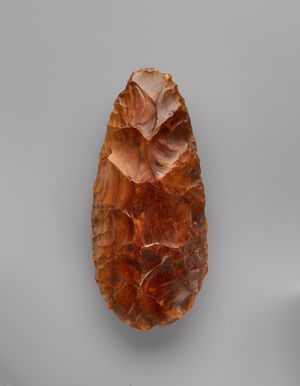The commentary quoted below advocates a productive rage against “the dying of the light” (Dylan Thomas); a sense of urgency.
(p. D6) Dr. Sacks, who recorded his heavenly highs and hellish lows in “A Leg to Stand On,” believes that those with a disability often oscillate between grateful rejoicing and bitter denouncing of their circumstances. The same dynamic may hold true for cancer patients. So how does one sustain the joy while avoiding the rancor?
There can be no simple answer, but I seek clues in works of art created by terminal cancer patients. Take, for example, the paintings of Hollis Sigler, which have been shown in hospitals across the country and collected in the volume “Hollis Sigler’s Breast Cancer Journal.”
. . . She depicts a shocking lack of control in a painting with food and silverware unexpectedly flying from a table in a tornado of debris. The image reminds me of Dr. Benedict B. Benigno’s perspective on cancer: “If life is a banquet, then cancer takes away the knife and fork and pulls the chair out from under us.”
To document the ravages of metastatic breast cancer, Ms. Sigler, who died of the disease in 2001, used spacers between frames for prose on the dire statistics and facts she had learned. On the edges of the paintings, she recorded additional words from her journals and those of the poet and breast cancer activist Audre Lorde. Bitterness and rancor certainly get expressed in these testimonies, but righteous rage is channeled toward the real enemies: the absence of a cure, the lack of preventive measures, inadequate detection tools, degrading and injurious treatments, miserable mortality rates, contaminants in the environment.
. . .
Not repressing but directing her anger, Ms. Sigler managed, through her dazzling artistry, to contest and revise the poet W. H. Auden’s advice: “Let your last thinks all be thanks.”
For the full commentary see:
(Note: ellipses added.)
(Note: the online version of the commentary has the date July 16, 2015 [sic], and has the same title as the print version.)
The book of paintings by Hollis Sigler, mentioned above, is:
Sigler, Hollis, Susan M. Love, and James Yood. Hollis Sigler’s Breast Cancer Journal. New York: Hudson Hills Press, 1999.


